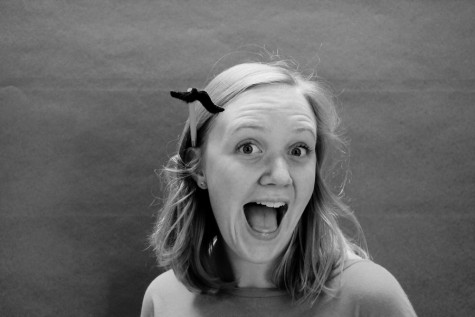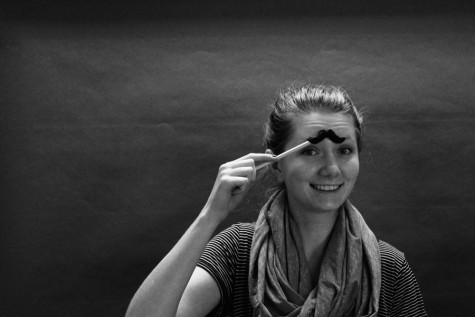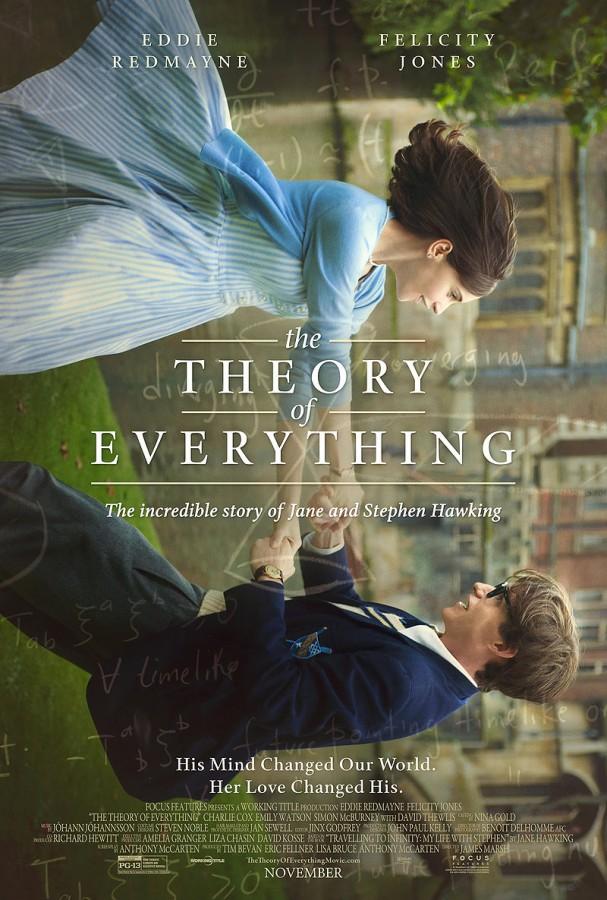Breathtaking portrayals highlight “The Theory of Everything”
Combining science, love story, drama, and bio-pic, “The Theory of Everything” tells the inspiring story of the life and illness of one of the world’s most influential physicists, Stephen Hawking, and his relationship with Jane Wilde. This beautiful story encompasses a wide range of genres while portraying a hopeful message of perseverance through hard times.
The movie tells the story of Stephen Hawking (Eddie Redmayne), a physics student who is unexpectedly told he could only expect to live for two more years, as he is diagnosed with a rare motor neuron disease. He then resolves to explain exactly what he has so little of: time. As Hawking continues to develop his theories, his relationship with Jane Wilde (Felicity Jones), evolves into a tumultuous marriage.
The most impressive part of the film, which launched the movie into Oscar worthiness, is Redmayne’s ability to show the progression of Hawking’s motor neuron disease while remaining true to the progressive nature of the condition.
The development of Hawking’s disease keeps viewers on the edge of their seats, mixing hopeful scenes showing progress in his health juxtaposed with suffering and anger birthed from his rare condition.
Redmayne, whose most notable role was in the 2012 film adaptation of the musical “Les Miserables,” brought his own experience to the character role by meeting Hawking and other patients of ALS, in addition to going to Cambridge himself. He learned everything he could to entirely replicate Hawking’s experiences, and was put through so much strain that he needed special therapy because of the long hours he spent contorting into certain neck, arm, and back positions. Even his speaking remains true to Stephen Hawking’s as parts of the dialogue become difficult to understand because of the disease’s control over his body.
To balance his strong lead, Felicity Jones, seen in “The Amazing Spider-Man 2,” beautifully portrays the strain that Jane was under as she cared for a declining Hawking while being tempted by opportunities as life rushed past her.
The cinematography captured the feelings of the movie, combining light and darkness to set the tones of happiness and despair. The sensitive directing combines both documentary and narrative and aids in truthfully telling the history of the Hawkings’ lives. Set to a beautiful score, these cinematographic elements successfully support the story that is being told.
Expressed through a range of genres with superb performances by the actors, “The Theory of Everything” examines the impact that love can have in difficult circumstances. Bittersweet yet moving, this love story mixed with narrative is a definite must-see.






































![Teacher Lore: Mr. Hillman [Podcast]](https://bsmknighterrant.org/wp-content/uploads/2025/03/teacherlorelogo-1200x685.png)






